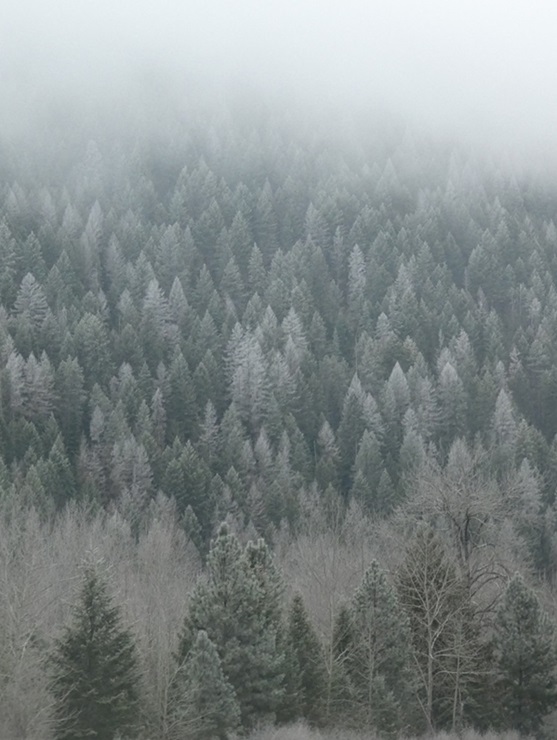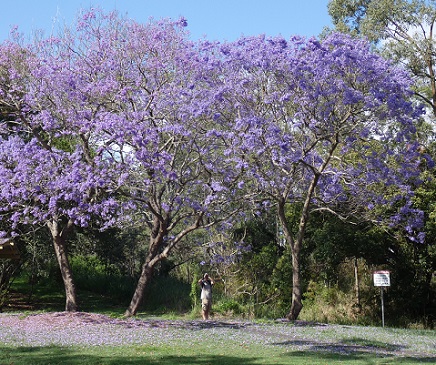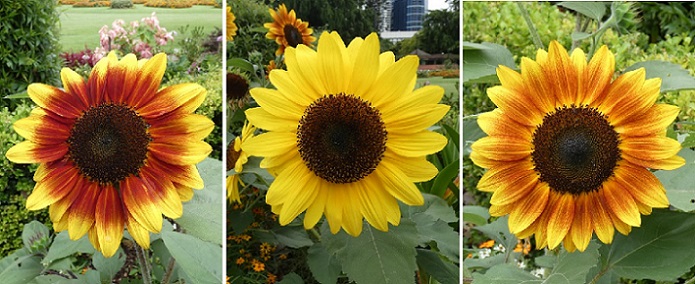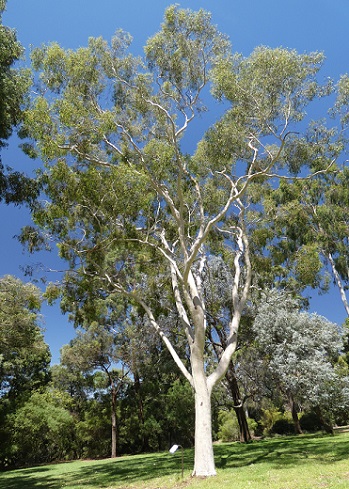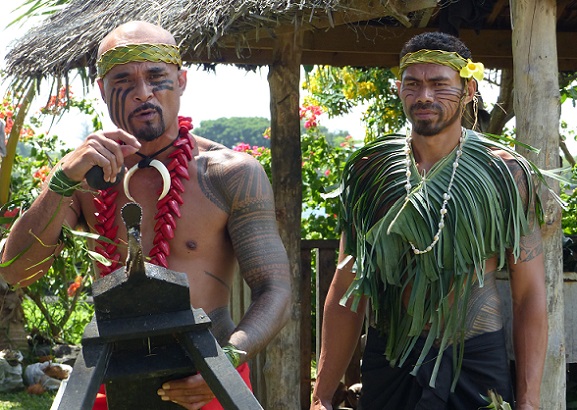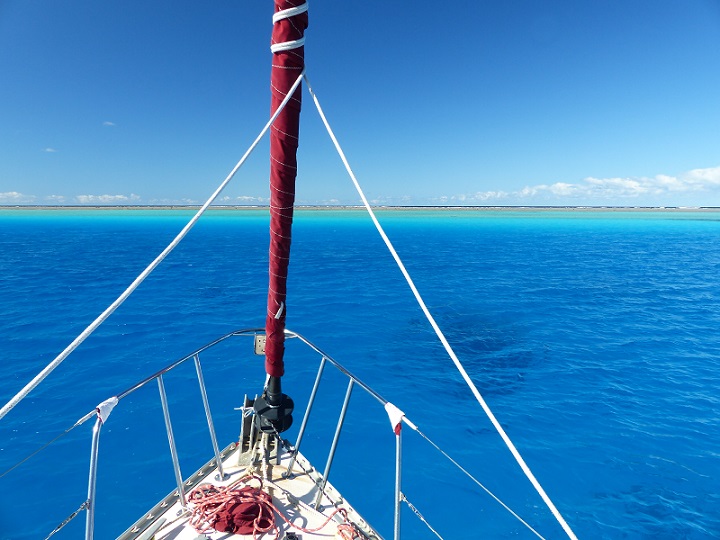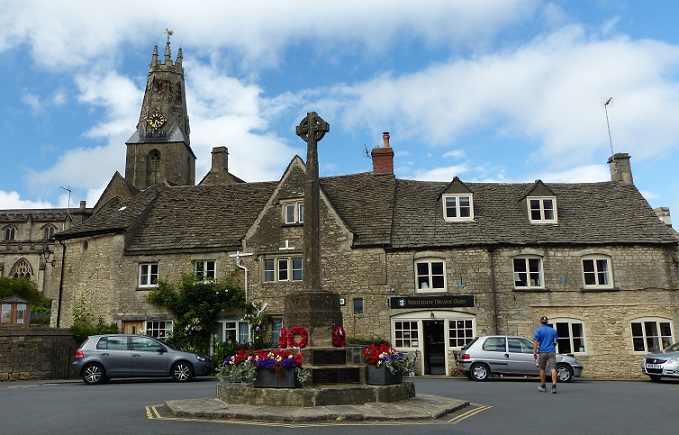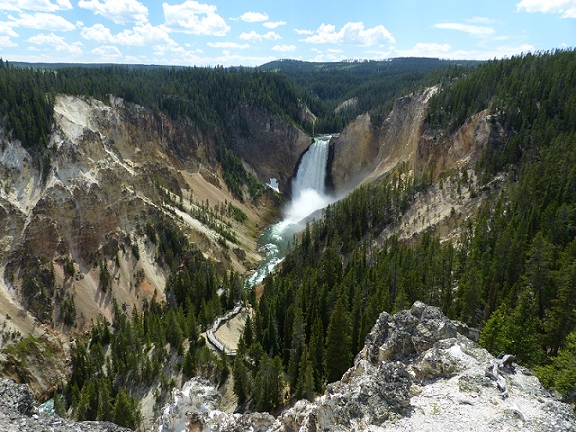
Tregoning
12 April 2024 | We are back aboard Tregoning in Mersin Marina, Mersin, Türkiye
02 April 2024 | We are in Toronto Airport, Canada: Tregoning is in Mersin Marina, Mersin, Türkiye
25 February 2024 | We are back in Gainesville, FL: Tregoning is in Mersin Marina, Mersin, Türkiye
18 February 2024 | We are in Glenwood, New Mexico: Tregoning is in Mersin Marina, Mersin, Türkiye
12 February 2024 | We are in Morro Bay, California: Tregoning is in Mersin Marina, Mersin, Türkiye
19 January 2024 | We are in Vancouver, BC Canada: Tregoning is in Mersin Marina, Mersin, Türkiye
01 January 2024 | We are in Washington State: Tregoning is in Mersin Marina, Mersin, Türkiye
15 December 2023 | We are in Minnesota: Tregoning is in Mersin Marina, Mersin, Türkiye
18 November 2023 | We are in Florida: Tregoning is in Mersin Marina, Mersin, Türkiye
29 October 2023 | We're in Florida - Tregoning is at B-dock, Mersin Marina, Mersin, Türkiye
21 October 2023 | 7 Oda Kapadokya Cave Hotel, Ürgüp, Türkiye
14 October 2023 | Hotel Aşikoğlu, Boğazkale, Türkiye
07 October 2023 | B-dock, Mersin Marina, Mersin, Türkiye
19 September 2023 | “Chez Jon & Angela”, Near Otterton, Devon, UK
14 September 2023 | Airbnb in Fortuneswell on the Isle of Portland, Dorset, UK
11 September 2023 | With Mike, Grange-over-Sands, Cumbria, UK
03 September 2023 | Ardington House, Ardington, Oxfordshire, UK
24 August 2023 | Near "Chez Joan and Peter", College of Roseisle, Moray, Scotland
11 August 2023 | Andrew's house (not exactly), Lichfield, UK
22 July 2023 | Chez Gail, near the New York Café, Budapest, Hungary
A stroll from Europe to North America
01 September 2016 | Tregoning is in Whangarei Town Basin Marina, Whangarei, New Zealand but we are on the Reykjanes Peninsula, Iceland
Photo: People enjoying the warm waters at the Blue Lagoon
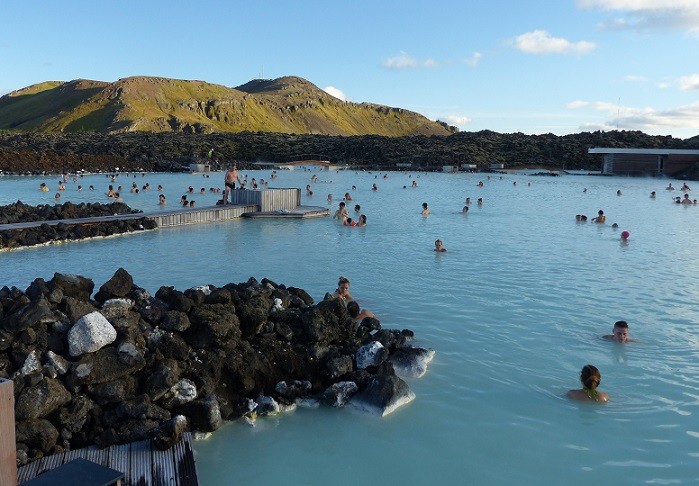
Iceland Air wants to encourage people to stop in Iceland for a vacation, so you can spend up to a week there as break in transatlantic flights without paying any extra for the plane tickets. Of course, you still have to pay for transportation and accommodation in Iceland which is not cheap. We had flown with Iceland Air because it was the best fare from Seattle to London when we booked but we did not know then about the extended layover option. After hearing about Jennie’s week-long stay and seeing her marvelous pictures, we really wished that we had planned to stay longer but she did inspire us to make the most of our 19 hour layover.
After Diane very kindly dropped us off at Gatwick Airport, we checked our luggage all the way to Seattle and so had to keep any overnight stuff we would need in Iceland in our hand-luggage. When we had stopped in Iceland for just a couple of hours to change flights on our way to London, the clouds had been low and it was grey and drizzly, so we were prepared for something similar on our return. Instead, we were the luckiest visitors ever, with absolutely perfect weather which made the cost of the rental car and motel room completely worthwhile.
A shuttle from the Keflavík International Airport took us to our “Bed and Breakfast, Keflavík Airport” motel on a former US military base, where we checked-in and collected our rental car. We then drove south across the pretty barren, lava landscape of the Reykjanes Peninsula (southwestern Iceland) to our first destination, the Blue Lagoon geothermal spa. This had been highly recommended to us by nephews Roger and Thomas who had stopped there on their way back to the UK from visiting us on Tregoning in Nova Scotia in 2008.
The Blue Lagoon (which in Icelandic is Bláa lónið) is one of the most visited attractions in Iceland, so we were glad that we had made reservations online as there were long lines to enter. But everything moved efficiently and we were soon provided with fluffy white towels and sophisticated electronic wrist bands which provide access to lockers and other things that you have already paid for, and run-up a tab for food, drink, massages, etc., that has to be paid before you can exit. Very efficient and eliminates the need to carry stuff around.
Surrounded by a dark-rust colored lava landscape, the man-made lagoon has been developed from a pool that formed from the output-water of the Svartsengi geothermal power plant that had been built there in 1976. By 1981, people started bathing in the pool after its supposed healing powers were popularized, and within 11 years, the Blue Lagoon Company was established and the bathing facility was opened to the public.
There are geothermal power plants all over Iceland at which superheated water (at about 1.2 MPa or 170 psi pressure and 240 °C or 464 °F) is vented from the ground near a lava flow and is used to run turbines that generate electricity. After going through the turbines, the steam and hot water passes through a heat exchanger to provide heat for a municipal water heating system. The high mineral content of the water prevents it being recycled so it must be disposed of in the nearby landscape, a permeable lava field. After the minerals have precipitated-out around the lava, the water percolates into the ground. However, the mineral deposits become impermeable over time, necessitating each geothermal plant keep continuously digging new ponds in the nearby lava field, a potentially limiting environmental impact of this otherwise sustainable form of energy production.
At Svartsengi, the water flowing out of the heat exchanger is rich in minerals such as silica and sulfur and is fed into the Blue Lagoon for recreational and medicinal users. Bathing in the Blue Lagoon is reputed to help some people suffering from skin diseases and the spa has a research and development facility to help find cures for skin ailments using the mineral-rich water.
Like most visitors, however, we were not there for any healing powers but to enjoy the lovely warm water, which in the bathing area of the lagoon averages 37–39 °C (99–102 °F). The lagoon has a smooth, man-made but mineral-coated floor at a water depth of about 1 – 1.5 m (4 – 6 feet) but it is not visible because the silicate minerals create a milky blue opaqueness to the water. With perhaps a couple of hundred people sharing the large, branched pools (at least, the area of a soccer pitch), it is difficult not to think about a rather unsavory human soup. However, the water is completely renewed every two days and guests are required to shower before bathing (in the women’s changing rooms, there are workers to monitor this).
During our two-hour stay at the Blue Lagoon, in addition to simply relaxing in the steaming water, we enjoyed the drink (a plastic cup full of beer, wine, or cider) that was included with our entrance fee, and a complimentary face-pack of pale-greenish-white mineral slurry. For people planning to spend many hours at the Blue Lagoon, there are massages (in-water or out-), a fine restaurant, and other typical spa activities.
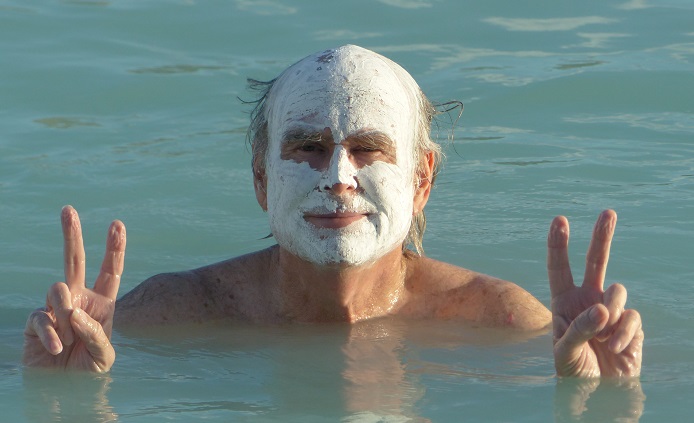
Auditioning for "The Joker"? Randall in his mud face-pack
We had planned on eating dinner at the Blue Lagoon until we talked to Jennie who had recommended an Icelandic restaurant on the waterfront in Reykjavik. So map in hand, we drove about 47 km (29 miles) north to arrive in the capital city in the fading light of the day. After walking briefly along the waterfront, we got directions to the Kopar Restaurant (actually just one block from where we were standing) and, again, we were thankful that we had made a reservation. There is no question that the meal was expensive but it was absolutely excellent. We were not quite bold enough to try the horsemeat but my “spaghetti-style” zucchini with chickpea balls and daim mousse dessert were delectable. Whale meat (I am glad to say) was not on the menu but outside along the docks for the tourists’ fishing- and boat-tours, there were banners asking visitors not to buy or eat whale meat. There was no argument from us.
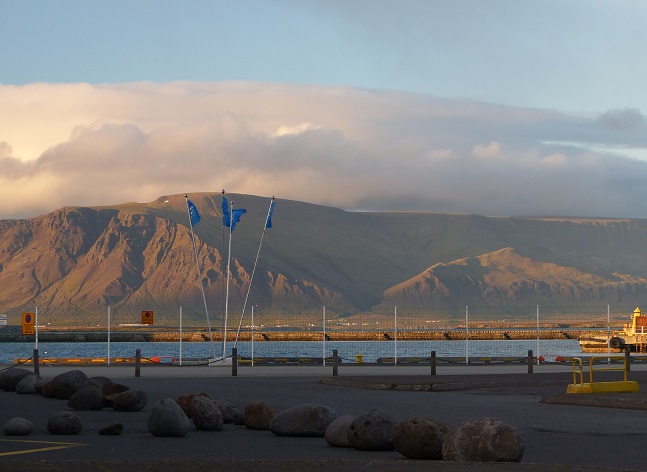
View from the waterfront in Reykjavik
Driving back to the motel along the well-lit highway, Randall wondered aloud whether there would be any chance of us seeing the northern lights. He was somewhat optimistic because a friend of a friend of ours had posted pictures on FaceBook of the northern lights over northern Iceland just the day before. Also the airport-shuttle driver had mentioned that although they were not visible on the south end of the island the night before, they might be tonight. Normally, we might be hard-pressed to stay up late enough at the end of August for the sky to be totally dark, but after our Blue Lagoon appointment at 6 pm and our restaurant reservation for 9 pm, it was quite late by the time we were driving to the motel.
So as Randall drove and speculated about the northern lights, I peered out of the windscreen and said, “Oh, you mean like that shimmering green curtain above us?” In great excitement, we took the next exit off the highway and followed the narrow unlit road through a lava field until there was sufficient room at an intersection for us to pull over without blocking the road or lacerating our tires on lava.
Neither of us had seen the northern lights before, and although these were not large or vivid enough for me to get a good photo (for which a tripod would have been useful), there was no question that we were looking at the real thing. When we eventually got back to the motel, we left our curtains open and each time I awoke during the night (briefly every two hours is typical for me these days), I could see the green streamers of softly glowing light out of the window. We were exceptionally lucky.
Of course, this begs the question, “What are the northern lights?”
The northern lights or auroras, are the result of collisions between gaseous particles in the Earth's atmosphere with charged particles released from the sun's atmosphere. Thus, they only appear when there is sufficient solar wind to disturb the earth’s magnetosphere. The lights are seen above the magnetic poles, hence, they are only are visible at high latitudes. Those of the northern hemisphere are the aurora borealis, and those of the southern hemisphere are the aurora australis.
The lights appear in many forms, from patches or scattered clouds of light, to streamers, arcs, rippling curtains, or shooting rays that light up the sky with an eerie glow. Variations in auroral color depend upon the type of gas particles that are colliding, with the most common being a pale yellowish-green (as we saw) which is produced by oxygen molecules located about 60 miles above the earth. Rarer colors are all-red auroras (high-altitude oxygen) or blue to purplish-red auroras (nitrogen).
Despite our late night (for us), we were up at 5 am the next morning (1st September) to enjoy the motel’s expansive and delicious breakfast smorgasbord and to make the most of the few hours before we had to return the car and check-in at the airport. So we decided to drive around the Reykjanes Peninsula stopping at various sites of interest along the way. After retracing our route to the Blue Lagoon, we continued to look at the south coast at the small fishing town of Grindavík which produces 40% of the nation’s salt fish. Here, we saw many examples of the rural Icelandic architectural theme of cuboid buildings covered with corrugated metal painted in bold colors.
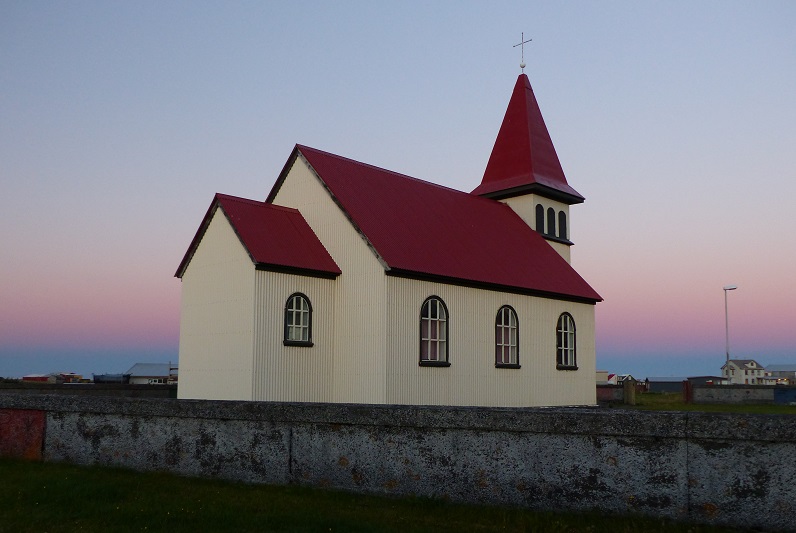
A church in Grindavik
Being high tide, we failed to find the deep, round pool that is cut out of the coastal lava rocks and which with sufficient waves can create a blow-hole at Brimketil. However, in the clear sunny conditions we could easily see the rocky, rectangular, guano-covered, off-shore islet of Eldey Rock. This 77-m-high (253 feet) rock is currently home to the world’s largest northern gannet colonies (around 16,000 pairs) but, sadly, it was also the site from which the flightless bird the great auk went globally extinct in 1844, with most of the last 50 birds killed to provide skins for museums. The early sunlight and blue sky made the perfect conditions for viewing the Reykjanes Lighthouse on a distant grassy knoll, and the cool air allowed us to see steaming vents scattered all over the lava landscape.
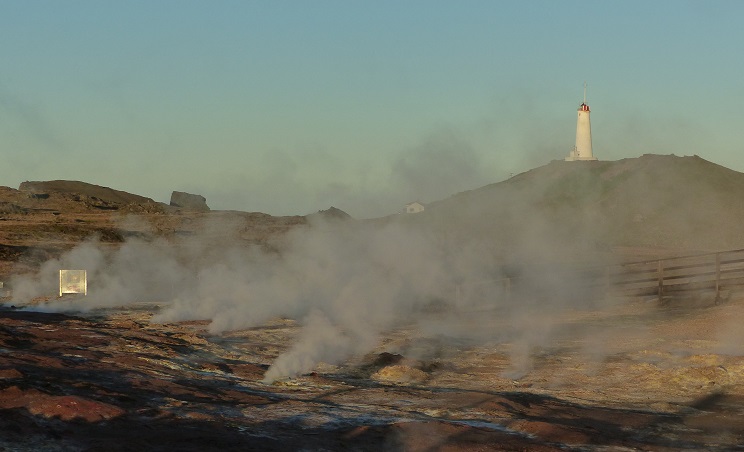
Steaming fumaroles almost hide the Reykjanes Lighthouse
The best steaming fumaroles were at the geothermal area of Gunnuhver. This area has Iceland’s largest mud pool, which is 20 m in diameter (66 feet) with a rim of vigorously boiling mud. Mud pools form where steam from boiling geothermal reservoir-water reaches the earth’s surface and then condenses and mixes with surface water. Accompanying gases such as carbon dioxide and hydrogen sulfide make the water acidic, which erodes the fresh lava rock into a boiling slurry of clay.
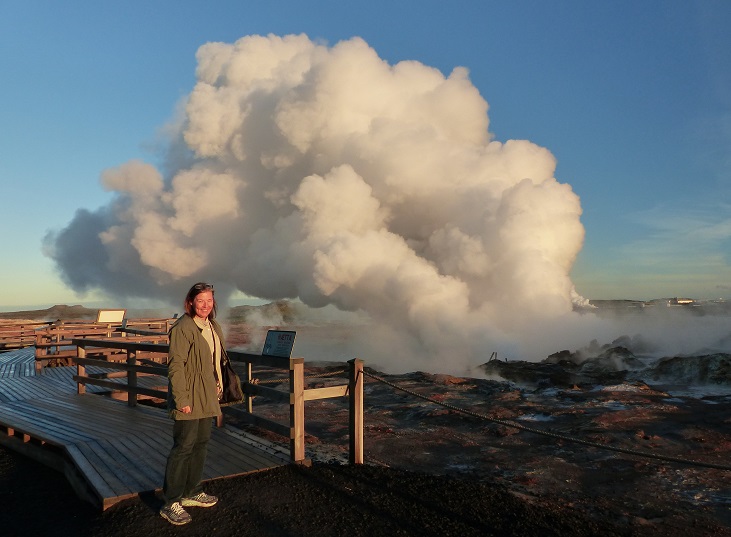
Alison near the largest steaming vent at Gunnuhver
The site’s name came from the ghost of a woman nicknamed Gunna from the early 1700s who was haunting the whole Reykjanes Peninsula. Gunna became mad with fury and died after failing to pay the rent on her croft and having her cooking pot confiscated by the landlord. The ghost had caused great disturbances (including apparently killing the landlord and his wife and driving others mad) until a priest (and sorcerer) set a trap for her with a ball of yarn (…who knew?) Once Gunna grabbed the loose end of the yarn, she was compelled to follow the ball as it rolled into the mud pool and she was never seen again…unless you have second sight and see her running around the edge of the pit following the ball of yarn.
Continuing on our clockwise loop around the Peninsula, our last stop was at the Bridge between the Continents. The boundary between the Eurasian and North American tectonic plates forms the volcanic Mid-Atlantic Ridge. Here the North American Plate is drifting west, away from the Eurasian Plate, and widening the Atlantic Ocean at a rate of about 2 cm per year. Iceland is one of the volcanic islands that has formed along the plates’ boundary and has various places where rifts along the Mid-Atlantic Ridge can be seen in the form of canyons and crevices on the land. As a symbol of the connection between the tectonic plates, an 18 m-long (60 feet) bridge was built in 2002 about 6 m (20 feet) over a canyon at one of these fissure on the Reykjanes Peninsula. Thus, it is indeed possible to walk across a bridge from Europe to North America. Pretty cool!
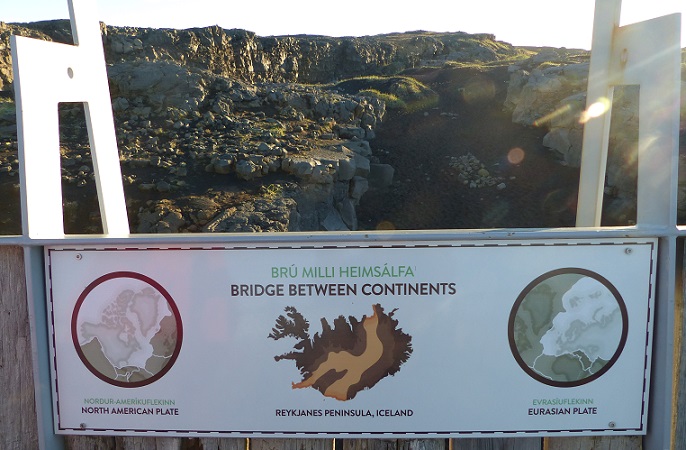
Sign on the Bridge between the Continents
After Diane very kindly dropped us off at Gatwick Airport, we checked our luggage all the way to Seattle and so had to keep any overnight stuff we would need in Iceland in our hand-luggage. When we had stopped in Iceland for just a couple of hours to change flights on our way to London, the clouds had been low and it was grey and drizzly, so we were prepared for something similar on our return. Instead, we were the luckiest visitors ever, with absolutely perfect weather which made the cost of the rental car and motel room completely worthwhile.
A shuttle from the Keflavík International Airport took us to our “Bed and Breakfast, Keflavík Airport” motel on a former US military base, where we checked-in and collected our rental car. We then drove south across the pretty barren, lava landscape of the Reykjanes Peninsula (southwestern Iceland) to our first destination, the Blue Lagoon geothermal spa. This had been highly recommended to us by nephews Roger and Thomas who had stopped there on their way back to the UK from visiting us on Tregoning in Nova Scotia in 2008.
The Blue Lagoon (which in Icelandic is Bláa lónið) is one of the most visited attractions in Iceland, so we were glad that we had made reservations online as there were long lines to enter. But everything moved efficiently and we were soon provided with fluffy white towels and sophisticated electronic wrist bands which provide access to lockers and other things that you have already paid for, and run-up a tab for food, drink, massages, etc., that has to be paid before you can exit. Very efficient and eliminates the need to carry stuff around.
Surrounded by a dark-rust colored lava landscape, the man-made lagoon has been developed from a pool that formed from the output-water of the Svartsengi geothermal power plant that had been built there in 1976. By 1981, people started bathing in the pool after its supposed healing powers were popularized, and within 11 years, the Blue Lagoon Company was established and the bathing facility was opened to the public.
There are geothermal power plants all over Iceland at which superheated water (at about 1.2 MPa or 170 psi pressure and 240 °C or 464 °F) is vented from the ground near a lava flow and is used to run turbines that generate electricity. After going through the turbines, the steam and hot water passes through a heat exchanger to provide heat for a municipal water heating system. The high mineral content of the water prevents it being recycled so it must be disposed of in the nearby landscape, a permeable lava field. After the minerals have precipitated-out around the lava, the water percolates into the ground. However, the mineral deposits become impermeable over time, necessitating each geothermal plant keep continuously digging new ponds in the nearby lava field, a potentially limiting environmental impact of this otherwise sustainable form of energy production.
At Svartsengi, the water flowing out of the heat exchanger is rich in minerals such as silica and sulfur and is fed into the Blue Lagoon for recreational and medicinal users. Bathing in the Blue Lagoon is reputed to help some people suffering from skin diseases and the spa has a research and development facility to help find cures for skin ailments using the mineral-rich water.
Like most visitors, however, we were not there for any healing powers but to enjoy the lovely warm water, which in the bathing area of the lagoon averages 37–39 °C (99–102 °F). The lagoon has a smooth, man-made but mineral-coated floor at a water depth of about 1 – 1.5 m (4 – 6 feet) but it is not visible because the silicate minerals create a milky blue opaqueness to the water. With perhaps a couple of hundred people sharing the large, branched pools (at least, the area of a soccer pitch), it is difficult not to think about a rather unsavory human soup. However, the water is completely renewed every two days and guests are required to shower before bathing (in the women’s changing rooms, there are workers to monitor this).
During our two-hour stay at the Blue Lagoon, in addition to simply relaxing in the steaming water, we enjoyed the drink (a plastic cup full of beer, wine, or cider) that was included with our entrance fee, and a complimentary face-pack of pale-greenish-white mineral slurry. For people planning to spend many hours at the Blue Lagoon, there are massages (in-water or out-), a fine restaurant, and other typical spa activities.

Auditioning for "The Joker"? Randall in his mud face-pack
We had planned on eating dinner at the Blue Lagoon until we talked to Jennie who had recommended an Icelandic restaurant on the waterfront in Reykjavik. So map in hand, we drove about 47 km (29 miles) north to arrive in the capital city in the fading light of the day. After walking briefly along the waterfront, we got directions to the Kopar Restaurant (actually just one block from where we were standing) and, again, we were thankful that we had made a reservation. There is no question that the meal was expensive but it was absolutely excellent. We were not quite bold enough to try the horsemeat but my “spaghetti-style” zucchini with chickpea balls and daim mousse dessert were delectable. Whale meat (I am glad to say) was not on the menu but outside along the docks for the tourists’ fishing- and boat-tours, there were banners asking visitors not to buy or eat whale meat. There was no argument from us.

View from the waterfront in Reykjavik
Driving back to the motel along the well-lit highway, Randall wondered aloud whether there would be any chance of us seeing the northern lights. He was somewhat optimistic because a friend of a friend of ours had posted pictures on FaceBook of the northern lights over northern Iceland just the day before. Also the airport-shuttle driver had mentioned that although they were not visible on the south end of the island the night before, they might be tonight. Normally, we might be hard-pressed to stay up late enough at the end of August for the sky to be totally dark, but after our Blue Lagoon appointment at 6 pm and our restaurant reservation for 9 pm, it was quite late by the time we were driving to the motel.
So as Randall drove and speculated about the northern lights, I peered out of the windscreen and said, “Oh, you mean like that shimmering green curtain above us?” In great excitement, we took the next exit off the highway and followed the narrow unlit road through a lava field until there was sufficient room at an intersection for us to pull over without blocking the road or lacerating our tires on lava.
Neither of us had seen the northern lights before, and although these were not large or vivid enough for me to get a good photo (for which a tripod would have been useful), there was no question that we were looking at the real thing. When we eventually got back to the motel, we left our curtains open and each time I awoke during the night (briefly every two hours is typical for me these days), I could see the green streamers of softly glowing light out of the window. We were exceptionally lucky.
Of course, this begs the question, “What are the northern lights?”
The northern lights or auroras, are the result of collisions between gaseous particles in the Earth's atmosphere with charged particles released from the sun's atmosphere. Thus, they only appear when there is sufficient solar wind to disturb the earth’s magnetosphere. The lights are seen above the magnetic poles, hence, they are only are visible at high latitudes. Those of the northern hemisphere are the aurora borealis, and those of the southern hemisphere are the aurora australis.
The lights appear in many forms, from patches or scattered clouds of light, to streamers, arcs, rippling curtains, or shooting rays that light up the sky with an eerie glow. Variations in auroral color depend upon the type of gas particles that are colliding, with the most common being a pale yellowish-green (as we saw) which is produced by oxygen molecules located about 60 miles above the earth. Rarer colors are all-red auroras (high-altitude oxygen) or blue to purplish-red auroras (nitrogen).
Despite our late night (for us), we were up at 5 am the next morning (1st September) to enjoy the motel’s expansive and delicious breakfast smorgasbord and to make the most of the few hours before we had to return the car and check-in at the airport. So we decided to drive around the Reykjanes Peninsula stopping at various sites of interest along the way. After retracing our route to the Blue Lagoon, we continued to look at the south coast at the small fishing town of Grindavík which produces 40% of the nation’s salt fish. Here, we saw many examples of the rural Icelandic architectural theme of cuboid buildings covered with corrugated metal painted in bold colors.

A church in Grindavik
Being high tide, we failed to find the deep, round pool that is cut out of the coastal lava rocks and which with sufficient waves can create a blow-hole at Brimketil. However, in the clear sunny conditions we could easily see the rocky, rectangular, guano-covered, off-shore islet of Eldey Rock. This 77-m-high (253 feet) rock is currently home to the world’s largest northern gannet colonies (around 16,000 pairs) but, sadly, it was also the site from which the flightless bird the great auk went globally extinct in 1844, with most of the last 50 birds killed to provide skins for museums. The early sunlight and blue sky made the perfect conditions for viewing the Reykjanes Lighthouse on a distant grassy knoll, and the cool air allowed us to see steaming vents scattered all over the lava landscape.

Steaming fumaroles almost hide the Reykjanes Lighthouse
The best steaming fumaroles were at the geothermal area of Gunnuhver. This area has Iceland’s largest mud pool, which is 20 m in diameter (66 feet) with a rim of vigorously boiling mud. Mud pools form where steam from boiling geothermal reservoir-water reaches the earth’s surface and then condenses and mixes with surface water. Accompanying gases such as carbon dioxide and hydrogen sulfide make the water acidic, which erodes the fresh lava rock into a boiling slurry of clay.

Alison near the largest steaming vent at Gunnuhver
The site’s name came from the ghost of a woman nicknamed Gunna from the early 1700s who was haunting the whole Reykjanes Peninsula. Gunna became mad with fury and died after failing to pay the rent on her croft and having her cooking pot confiscated by the landlord. The ghost had caused great disturbances (including apparently killing the landlord and his wife and driving others mad) until a priest (and sorcerer) set a trap for her with a ball of yarn (…who knew?) Once Gunna grabbed the loose end of the yarn, she was compelled to follow the ball as it rolled into the mud pool and she was never seen again…unless you have second sight and see her running around the edge of the pit following the ball of yarn.
Continuing on our clockwise loop around the Peninsula, our last stop was at the Bridge between the Continents. The boundary between the Eurasian and North American tectonic plates forms the volcanic Mid-Atlantic Ridge. Here the North American Plate is drifting west, away from the Eurasian Plate, and widening the Atlantic Ocean at a rate of about 2 cm per year. Iceland is one of the volcanic islands that has formed along the plates’ boundary and has various places where rifts along the Mid-Atlantic Ridge can be seen in the form of canyons and crevices on the land. As a symbol of the connection between the tectonic plates, an 18 m-long (60 feet) bridge was built in 2002 about 6 m (20 feet) over a canyon at one of these fissure on the Reykjanes Peninsula. Thus, it is indeed possible to walk across a bridge from Europe to North America. Pretty cool!

Sign on the Bridge between the Continents
Comments
| Vessel Name: | Tregoning |
| Vessel Make/Model: | Morgan Classic 41 |
| Hailing Port: | Gainesville, FL |
| Crew: | Alison and Randall |
| About: | We cast-off from Fernandina Beach in north Florida on 1st June 2008 and we have been cruising on Tregoning ever since. Before buying Tregoning, both of us had been sailing on smaller boats for many years and had worked around boats and water throughout our careers. |
| Extra: | “Tregoning” (rhymes with “belonging”) and is a Cornish word (meaning “homestead of Cohnan” or “farm by the ash trees”) and was Alison's mother’s middle name. Cornwall is in southwest England and is where Alison grew-up. |
Tregoning's Photos - Main
 |
Extra photographs from our three-week campervan tour of the South Island from November 15th to December 5th 2015
217 Photos
Created 4 January 2016
|
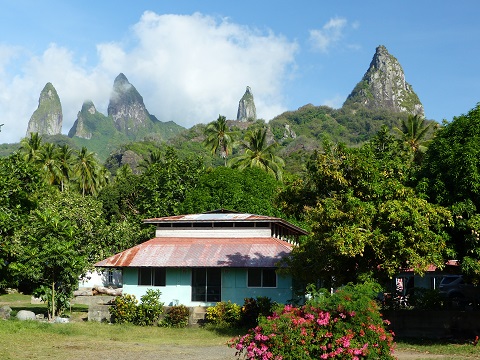 |
Random pictures from our month spent on the islands of Hiva Oa, Tahuata, Ua Pou, and Nuku Hiva
45 Photos
Created 18 July 2015
|
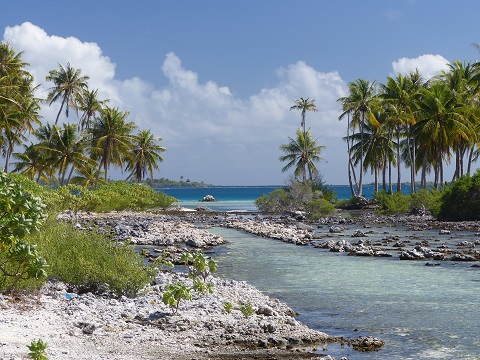 |
Random pictures from our month spent in 4 Tuamotu Atolls; Ahe, Fakarava, Tahanea, and Toau
32 Photos
Created 1 July 2015
|
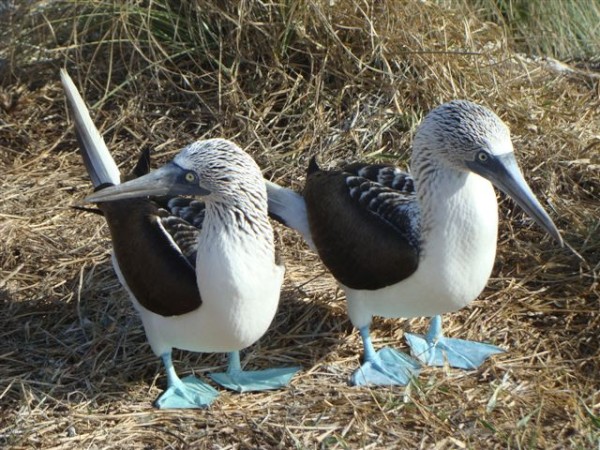 |
Some of the birds, fish, reptiles, and mammals (and others) that we have seen in Mexico
74 Photos
Created 5 May 2014
|
Tregoning

Who: Alison and Randall
Port: Gainesville, FL
